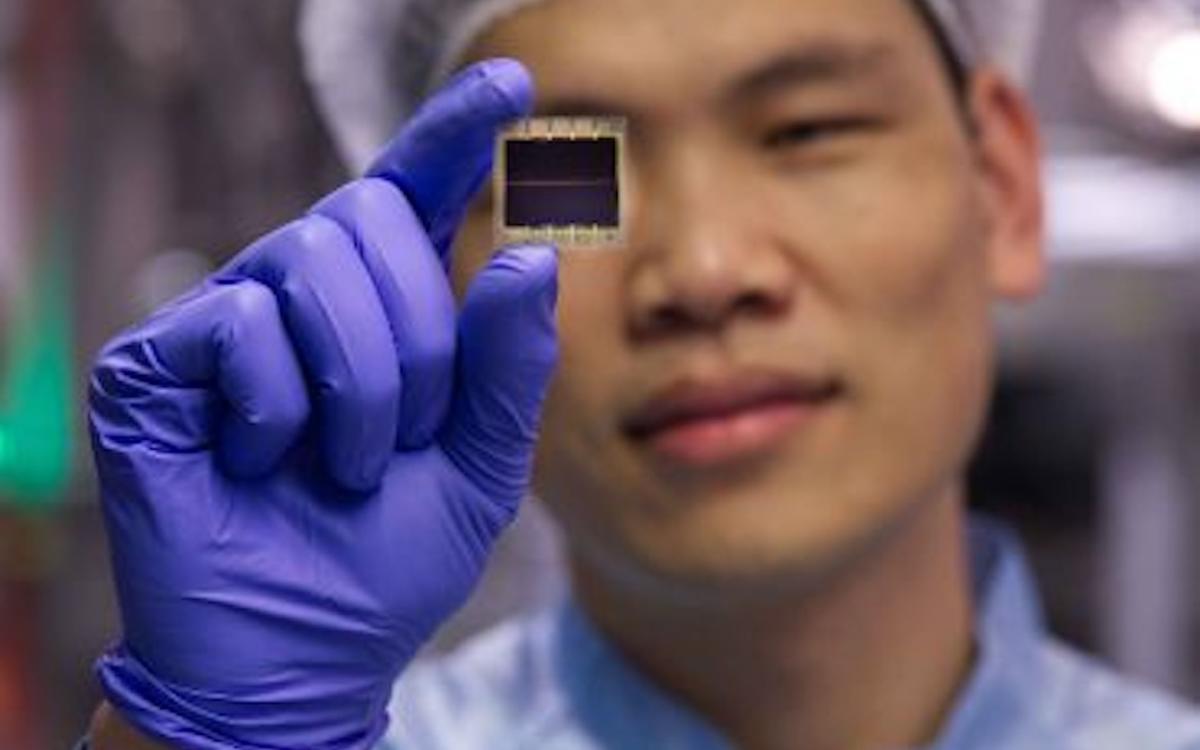University of Oxford scientists have made a remarkable breakthrough that could lead to more efficient solar panels that are thin enough to cover any common object, potentially opening up a new frontier in adopting clean, low-cost energy solutions.
In August, the team from Oxford’s physics department announced that it developed an “ultra-thin material” that provides 27% energy efficiency in converting sunlight into energy.
This is significant because the most commercially available solar panels peak at roughly 23% efficiency, according to MarketWatch. And while solar paints have shown promise as a less bulky option to traditional panels, scientists are still working to improve their efficiency.
The release notes that Oxford researchers have already been working with thin-film perovskite for around 10 years, with Oxford PV ultimately birthed from the physics lab. The company’s high-efficiency perovskite solar cell technology integrates with conventional panels and is moving toward commercialization.
With further development, the Oxford team believes its latest photovoltaic device could exceed 45% efficiency — with no need for the assistance of the panels.
“During just five years experimenting with our stacking or multi-junction approach, we have raised power conversion efficiency from around 6% to over 27%,” Oxford postdoctoral fellow Dr. Shuaifeng Hu said in the release.
Watch now: Uber-wealthy couple makes unprecedented move with $300 million land
“We believe that, over time, this approach could enable the photovoltaic devices to achieve far greater efficiencies,” Hu added.
Home solar panel systems have already garnered buzz for their ability to drastically lower electric bills and improve climate resilience during extreme weather, which has become more intense and frequent as the planet has warmed.
However, Oxford researchers suggested their new method could cut those costs even further because thin-film perovskite is much cheaper than silicone typically used for panels.
Furthermore, the technology could be used to power cleaner modes of transportation like electric vehicles and everyday necessities such as mobile phones. This would reduce the dependence on grids that are adding more renewable options but still have a long way to move away from dirty fuels.
According to S&P Global, Energy Institute data found that oil, gas, and coal accounted for 82% of the global energy mix in 2023. Air pollution from these fuels doesn’t just contribute to unsightly haze hanging over some cities, but it also has a significant impact on public health and is responsible for millions of deaths every year.
It is unclear when the thin-film perovskite technology could be readily available.
One hurdle in adopting new solar technologies is the available incentives to manufacture them on a large scale, according to Professor Henry Snaith, the co-founder and chief scientific officer of Oxford PV. If fully realized, however, Snaith believes they could be a game-changer.
“The latest innovations in solar materials and techniques demonstrated in our labs could become a platform for a new industry, manufacturing materials to generate solar energy more sustainably and cheaply,” Snaith said in the release.
“Versatile and efficient,” one commenter marveled at Electrek’s coverage of the technology. “The future is brighter!”
Join our free newsletter for weekly updates on the latest innovations improving our lives and shaping our future, and don’t miss this cool list of easy ways to help yourself while helping the planet.
